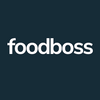Looking for cheap (or free) food delivery? Check out FoodBoss today and find your next meal with ease!
A comprehensive look at food delivery fees and how they vary by food delivery service.
Food delivery is a convenience that is becoming more and more popular, with an increasing number of delivery services and restaurants to choose from. But the convenience comes at a price: delivery fees. This seemingly simple fee is more complicated than you may realize, relying on four primary factors: your cart size (the price of the food in your cart before tax), the time of day, your location, and the restaurant’s preferences. These factors can turn your $15 meal into a $27 subtotal at checkout, without much explanation. This can be extremely frustrating and confusing. But don’t worry, we’re here to help eliminate any confusion. As a food delivery aggregator, we’re here to provide you with complete information, and ensure that you understand these fees before you order. Read on for a comprehensive look at the different fees used by food delivery apps and how to navigate them.
There are 6 different fee types used by food delivery services:
Delivery Fee: A Delivery Fee is the price you pay to have your food delivered. These are often the fees you see advertised as you browse through restaurants on food delivery services. They vary by restaurant and your location, and typically range from $0 to $15.
Surge Pricing: Surge Pricing is a delivery fee multiplier that increases your delivery fee during popular ordering times. This fee can range from 10%-75% of your delivery fee, depending on the time and your location. It is similar to surge pricing used by ride-sharing apps, such as Uber and Lyft, during popular ride times.
Service Fee: Service fees are determined by your cart size. Food delivery apps use this fee to charge you a percentage of your food subtotal, meaning the more food you order, the larger the service fee will be. These fees can range from 7.5% to 25% of your cart size. Some services also have variable percentages based on the restaurant.
Small Cart Fee: A small cart fee is added on by certain food delivery services when your cart size is below a specified amount. Services usually require you to order more than $10-$12 worth of food in order to avoid this fee. This fee is typically $2.00.
Delivery Minimum: Rather than tacking on a small cart fee, some services include a delivery minimum, meaning you cannot order if your cart size is less than $10-$15, depending on the restaurant. Delivery minimums can also increase during popular ordering times.
Merchant Fee: This is a less common fee that applies to specific restaurants on select apps. This is a flat fee determined by the restaurant. According to Caviar, restaurants typically add this fee in order to cover “staff fees, bag fees, related restaurant fees, as well as fees designated by their local or state authorities.”
The chart below provides a fee breakdown for each food delivery service:

These fees can get complicated and vary drastically, making ordering a stressful and confusing experience. Many service fees are also not revealed until you are already checking out, which can send you on a long hunt, hopping from app to app looking for the best option. FoodBoss solves that problem for you by comparing all of your options upfront. We take all of these fees into account and, based on your location and estimated cart size, show you the best option before you order. Never order without complete information again and save yourself time, money, and stress by checking FoodBoss first.

Written By: Maxine Kasznia
Twitter | LinkedIn | Instagram
Author bio: Maxine is a Chicago Native and UCLA grad. She has a passion for sustainable eating and loves to find the best environmentally friendly spots in every city she visits. After living in both Chicago and LA, she has an appreciation for local cuisines and continues to look for ways to expand her palate.

